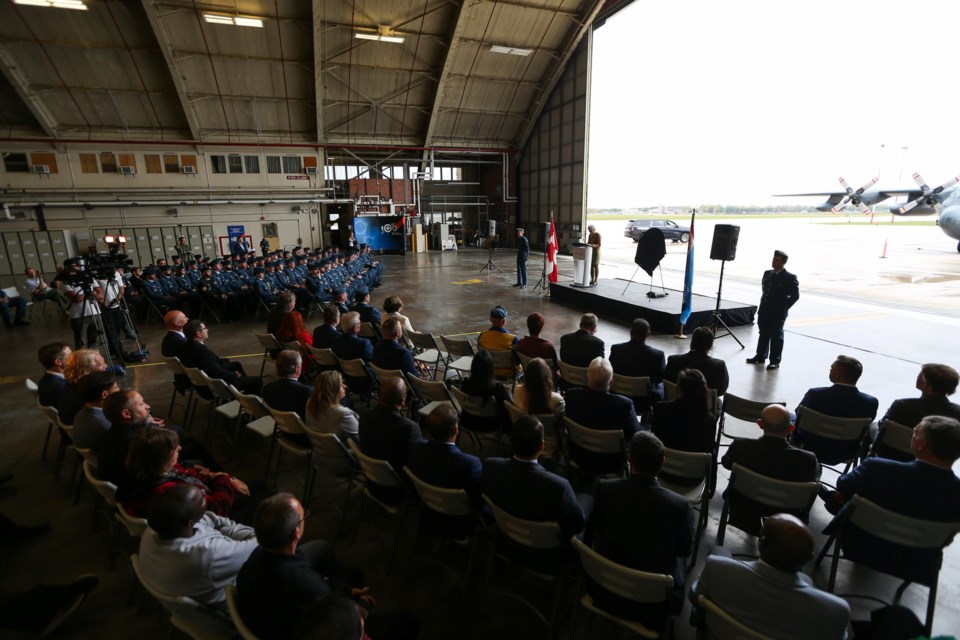MOOSE JAW — Many organizations have been celebrating the this year, with the Royal Canadian Mint 小蓝视频 the latest to parachute in to honour the aviation agency.
The Mint recently released a $2 collector coin that features a Hercules CC-130H plane — in service for six decades — in the centre with a blue background to symbolize the sky. Above the plane is the RCAF logo.
On the edge of the coin, surrounding the centrepiece, are the various aircraft that have been used throughout the past 100 years, including the Finch Mk. 5, F-86 Sabre, the CF-100 Mk. 5, the CC-115 Buffalo, CF-188 Hornet, CH-146 Griffon helicopter and the CT-114 Tutor.
The CT-114 Tutor is what the uses in its shows.
King Charles III is featured on the other side of the coin.
“In 2024, we look to the skies to commemorate the Royal Canadian Air Force’s (RCAF) 100 years of service, at home and abroad,” the Mint said.
“The RCAF Centennial is an opportunity to honour the history and heritage of Canada’s air force and to recognize its personnel’s national service and contributions to aviation, national security, emergency support and international peace.
Residents can acquire these coins coloured or non-coloured. Each specially wrapped roll contains 25 $2 100th Anniversary of the Royal Canadian Air Force commemorative circulation coins in a custom paper wrap.
Furthermore, all 25 coins are uncirculated — they all have a newly minted quality and feature the same colour-enhanced or non-colour-enhanced reverse design.
These coins are an “inspiring salute” to the RCAF and its personnel, while they are a great gift or keepsake for RCAF personnel (past and present) and their loved ones, for aviation and history enthusiasts, and for all who are inspired by the air force’s important legacy of service, the Mint added.
“The Royal Canadian Air Forces belongs to all Canadians, and in our centennial year, we are pleased to partner with the Royal Canadian Mint to showcase some of the aircraft that have contributed to training and security at home and around the world,” said Lt.-Gen. Eric Kenny, RCAF commander.
“As Canadians go about their day, they will soon carry with them a reminder of the iconic aircraft that have carried our aviators past and present over the last century,” he added. “Like a new coin, the future of your air force is bright.”
The RCAF was founded on April 1, 1924, just 15 years after the first powered, controlled, heavier-than-air flight in Canada in 1909. In late 1923, it was simply called the Canadian Air Force (CAF), but the name was changed after royal approval from King George V.
In the 1920s, the air force was mostly used for government operations such as mapping, spotting forest fires, exploring northern regions, and patrolling the fishing industry.
When the Second World War broke out on Sept. 1, 1939, the RCAF expanded significantly. The first Canadian air squadrons were sent to Europe in 1940 to participate in the Battle of Britain, while Canadian airmen served in many other battles throughout the war. Four Canadian pilots were awarded the Victoria Cross for bravery during the war.
Canadian airstrips also played a major role in training pilots due to the British Commonwealth Air Training Plan, which saw bases built across Canada — including in Saskatchewan — where many of the world’s best pilots learned to fly.
Today, roughly 18,000 personnel are employed throughout the air force. The organization works in partnership with the US Air Force to defend Canadian and North American air space.
.




